Serdar Berdimuhamedov Takes Part in the Ceremony of Laying a New Automobile Bridge across the Garabogazgol Bay
09:05 09.08.2022 11824
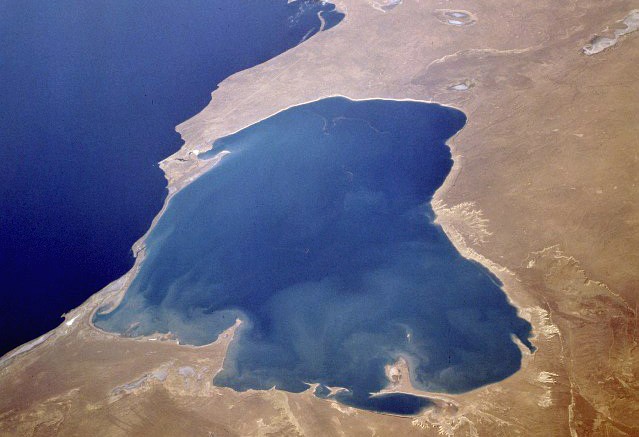
The ceremony of laying a new automobile bridge across the Garabogazgol Bay along the Turkmenbashi–Garabogaz–Kazakhstan border highway took place on August 8, with the participation of President Serdar Berdimuhamedov, who is on vacation. This is a significant event both in terms of the implementation of the progressive foreign policy strategy of Turkmenistan and of the development of the economy of our country in a new historical era.
The new bridge across the Garabogazgol Strait will become an important engineering facility of the Turkmenistan–Kazakhstan international transport route. The reconstruction of the road leading to it, which will be connected to the Ashgabat–Turkmenbashi highway, will significantly increase the capacity of the road system of our country and the quality and efficiency of logistics services and will expand the international transport and transit infrastructure and trade and economic relations of Turkmenistan with neighboring states.
The width of the Garabogazgol Strait is known to be 200 meters; it connects the bay of the same name with the Caspian Sea. Let us recall the history of one of the most famous natural attractions of Turkmenistan, which is also the largest salt basin in the world.
The area of its water area is about 18 thousand square kilometers.
Many people know that the saltiest place in the Caspian Sea is the Garabogazgol Bay, but few know that the salinity of its waters is completely different from that of the sea. The Bay is distinguished by a high content of Glauber’s salt (mirabilite), owing to which the water in it does not freeze even at a temperature of minus 10 degrees Celsius.
The Bay is separated from the sea by northern and southern sandy spits. There was a one-of-a-kind sea river, rushing water through the desert into the Bay. The first explorer who dared to enter the Bay in 1715 on sailing ships across the strait was Prince Alexander Bekovich-Cherkassky, who, by order of Peter I, compiled the first reliable geographical map of this part of the Caspian Sea and the Bay.
The next expedition led by a Russian hydrographer and cartographer F.I. Soymanov took place in 1726. But the fear of the sailors to die in the “Black Mouth” did not allow them to enter the Bay. The notoriety of the abyss that sucks in the ships prevented the implementation of the plan. It is no coincidence that Gara Bogaz translated from the Turkmen language as “black mouth”.
Finally, in 1836, an expedition led by G.S. Karelin managed to enter the Bay by boat. “The Karabugaz Bay,” G.S. Karelin wrote, “can be called a separate sea ...”
In 1847, a new expedition was organized, headed by I.M. Zherebtsov. He, like G.S. Karelin, was struck by the view of the Bay. According to him, the Bay “possessed deadly water, corroding even steel objects in a short time.” “Salt, sands and everything that kills life rules over those inhospitable shores and waters of the Bay. The caustic-salty water of the Bay blinded the fish entering there and threw the dead ashore. For many years of wandering, I have not seen the shores so gloomy and, as it were, threatening navigators...”
It soon became obvious that Garabogazgol was a storehouse of mineral salts of different properties, and the Bay received another name – “Golden Bottom”. The mineral wealth of the Bay became known all over the world. It has gained a reputation as a unique storage of hydromineral raw materials, which contains almost all the elements of the periodic table. At the early 20th century, many scientists were engaged in studying the resources of the Bay.
The industrial development of sodium sulfate began at Garabogazgol in 1924. In 1929, the first chemical enterprise, the Karabogazhim Trust, was established, it was reorganized in 1940 into the Karabogazsulfat plant. During the Great Patriotic War, the production of gypsum and its delivery to hospitals were organized there.
During those years, in addition to sodium sulfate, the industrial production of epsomite (magnesium sulfate) and bischofite (magnesium chloride), Glauber’s salt for medicine, sea salt, table salt and other minerals, used in various industries, began.
On the basis of the resources of the Bay, the production of more than ten types of chemical products was organized. Nevertheless, scientists believe that the further complex involvement of the minerals of the Garabogazgol Bay will accelerate the diversification of the chemical industry and will create a basis for the formation of hydrometallurgy. This will reduce the import of a wide range of production components and finished products and will significantly increase the export potential of Turkmenistan.
In 1980, despite the conflicting opinions of experts, the Bay was blocked by a dead dam, it began to quickly become shallow and after a few years turned into a dry salt lake, and salt storms began to rise. The Bay dried up catastrophically. There was only one way out – to dismantle the dam. This was done in 1992 and the sea water was given free flow into the Bay.
Scientists and practitioners believe that even today only a part of the wealth of the Bay is used, and the possibilities of its resources are truly inexhaustible. The Türkmenhimiýa State Concern and the Institute of Chemistry of the Academy of Sciences of the country confirmed that the Garabogazgol Bay has large deposits of chemical elements, mineral salts, sodium and magnesium sulfates, magnesium chloride, lithium and its compounds, magnesium oxide and magnesium.
Based on the available resources of hydro-mineral raw materials, it is possible to organize many more promising and interconnected industrial productions. It is estimated that the mineral raw materials of the Bay – sodium sulfate, bischofite, epsomite, magnesium, isolated from brine, and magnesium oxide are widely used in more than 25 different industries of world production, from space technology, aircraft and automotive industries to crop production and soap making.
The comprehensive involvement of the inexhaustible wealth of the Bay in industrial production is of strategic importance for Turkmenistan, first of all, in expanding the capabilities of the chemical industry and in forming new promising sectors of the economy, such as non-ferrous metallurgy, hydrometallurgy and mechanical engineering. In addition, new production facilities will be focused on the manufacture of high-quality import-substituting and export-oriented products with high added value.
For the supply of products of the “chemical storage of the country” and its export, it is planned to modernize the land transport system. And an important part of this work is the construction of a new automobile bridge with two-way two-lane traffic and roads leading to it on the section of the Turkmenbashi–Garabogaz–Kazakhstan highway. The completion of this project is scheduled for June 2024.
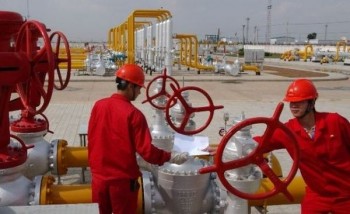
Turkmenistan exported natural gas worth $ 6.1 billion to China in January-November
Turkmenistan continues to hold a leading position in pipeline export of «blue» fuel to China. According to the General Customs Administration of the PRC, during January-November 2021, the Celestial Empire received 21.91 million tons of Turkmen natural gas through the Turkmenistan-China pipeline, which is $ 6.1 billion in monetary terms.
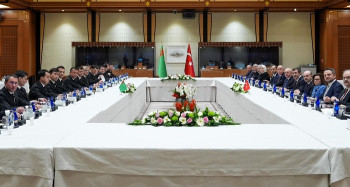
In Ankara, at the meeting of the Intergovernmental Commission, cooperation between Turkmenistan and Turkey in the oil and gas sector was emphasized
As part of the working visit of the delegation of Turkmenistan to Turkey, the eighth meeting of the Intergovernmental Turkmen-Turkish Commission on Economic Cooperation was held in Ankara on February 24-25, the Ministry of Foreign Affairs of Turkmenistan reported today.
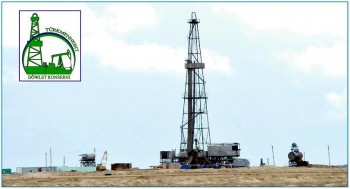
Management of «Gumdagnebit» significantly increased the rate of production growth in January-February
Oil and gas production department «Gumdagnebit» of the State Concern «Turkmennebit» in January-February 2023, held under the motto «The Year of Happy Youth with Arkadagly Serdar», ensured the production of about 91 thousand tons of oil from existing wells. At the same time, the plan for the reporting period was fulfilled by 112 percent. Compared to the same period last year, the achieved growth rate exceeded 124 percent.

The final results of the elections of deputies to the Mejlis, members of the Halk Maslahaty and Gengeshes have been summed up
The final results of the nationwide elections of deputies of the Mejlis, members of the halk maslahaty and Gengeshes, held on March 26, were summed up on Wednesday at a meeting of the Central Commission for Elections and Referendums in Turkmenistan (CEC), TDH reports.
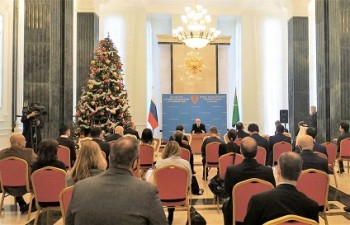
The volume of purchases of Turkmen gas by Gazprom will double in 2021, - Russian Ambassador to Turkmenistan
In 2021, the volume of gas purchased by Gazprom from Turkmenistan is likely to double and amount to about 10 billion cubic meters. This was stated on Friday by the Russian Ambassador to Turkmenistan Alexander Blokhin at a press conference at the embassy dedicated to the annual results of the Turkmen-Russian cooperation.




